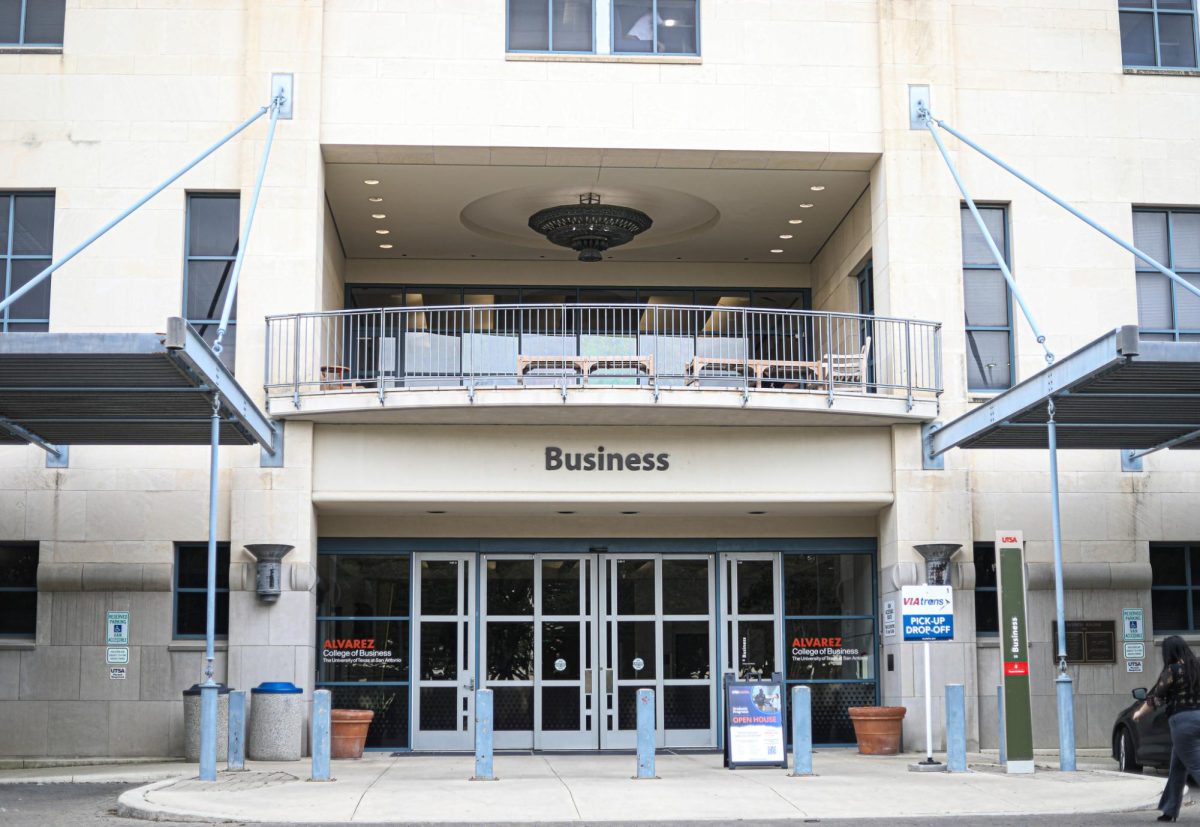
Since 2009, UTSA has been in a tight race with six other up-and-coming Texas universities to obtain Tier One status. The winner gets the prize: $690 million in research funds and a place in the pantheon of Texas academia—joining UT Austin, Texas A&M and Rice University.
“It’s a marathon, not a sprint,” President Ricardo Romo said in his State of the University address. The competition is between UT Arlington, The University of North Texas, UT Dallas, UT El Paso and our closest competitors, Texas Tech University and The University of Houston.
The event was held on Sept. 21 in the University Ballroom. UTSA Provost John Frederick hosted the event while Texas Secretary of State Hope Andrade gave a special introduction for President Romo.
The audience was comprised mostly of faculty, with the presence of several honored guests such as Texas State Representative John Garza, Chairman of the Board of the San Antonio Greater Chamber of Commerce Sam Dawson and entrepreneur John Spencer.
United States Secretary of Education Arne Duncan also delivered a surprise prerecorded video-message praising UTSA and Romo’s commitment to improving higher education opportunities for Hispanic students.
The speech emphasized the many challenges the university has undergone because of its high growth rate, coupled with a 12 percent budget cut in higher education funding. The population of UTSA has grown from about 19,000 students in 2000 to approximately 31,000 students in 2011—a 63 percent increase.
Romo’s address outlined UTSA’s progress over the 2010-2011 fiscal year towards becoming a Tier One research university.
While Tier One research status is an abstract concept with no formal guidelines, there are several national and state benchmarks established by institutions to help guide schools to reach this lofty goal.
Three accreditation bodies are considered the gatekeepers of the status: the Association of American Universities, the Carnegie Foundation for the Advancement of Teaching and the Center for Measuring University Performance, which publishes the Top American Research Universities report.
The nationally agreed upon benchmarks for the status include: membership in the Association of American Universities, the most recognized accreditation body; $100 million per year in research grants; selective student admission; low student-to-faculty ratio and competitive faculty compensation.
The University of Houston recently met the criteria of the Carnegie Foundation for the Advancement of Teaching for Tier One research status in January of 2011. The state of Texas, however, has more stringent benchmarks, which The University of Houston has yet to achieve.
In 2009, the 81st Texas Legislature passed House Bill 51 which set up a competition among the seven universities.
In addition to receiving $45 million in research grants for two consecutive years, the criteria for the competition, according to the Texas Higher Education Coordination Board, is to reach four of the six following benchmarks;
– An endowment of $400 million
-200 doctoral degrees per year over 2 consecutive years
– Academic excellence of the freshman class over 2 consecutive years
-Membership in the association of research libraries or housing a chapter of Phi Beta Kappa or a similar nationally recognized institution
-High-quality faculty over two consecutive years
-Commitment to high-quality graduate level programs.
Romo presented the audience with several achievements the university made this year outlined in UTSA 2016, a document formally known as “A Shared Vision UTSA 2016.” UTSA 2016 is the university’s strategic plan for becoming the next Tier One research university in Texas.
These achievements included the start of the UTSA football program, increased student retention, online and hybrid classes, the donation of $28 million by former student Mary McKinney and the GreenStar LED light bulb program, which donates $10 to UTSA for every bulb the company sells.
President Romo also highlighted UTSA’s growing partnerships with several national and local institutions and companies. He spoke of the success of the university’s partnership with the Department of Defense in establishing the UTSA Institute of Cyber Security; its partnership with the Southwest Research Institute in establishing the doctoral programs in physics and mechanical engineering; and the partnership between UTSA, CPS Energy and the City of San Antonio, which awarded the university with $50 million for sustainable energy research











